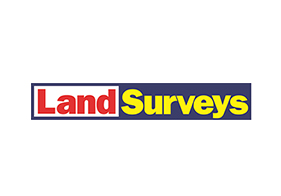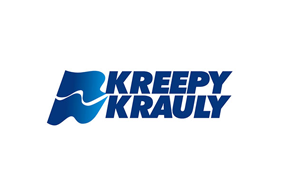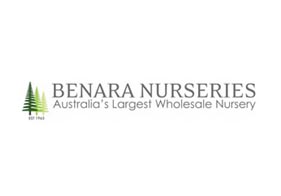Keywords are the basis of a robust SEO strategy. These keywords are what help your business get discovered by the right people. The reason we’re putting emphasis on “the right people” is that different web users are in different stages of their buyer journey.
Prospects in the decision phase of their buyer journey typically use buyer intent keywords when searching for information online.
In this article, we are going to discuss everything about buyer’s journey, keyword intent, and share tips on using keywords to increase your sales.
What is a Buyer’s Journey?
Most buyers typically go through a process from when they need to buy something to the moment they buy it. This is what’s called a buyer’s journey.
In each stage in the buyer’s journey, digital marketers use specific types of keywords that are related to the stage. Generally, there are three stages in the buyer’s journey.
- Stage #1: Awareness stage: In this, the web user is looking to learn more about a specific problem or interest. They don’t know what solution they need yet. In this stage, you use keywords with informational intent.
- Stage #2: Consideration stage: Here, the customer has an idea of their problem and what solutions are there. When looking up information online, they are trying to learn the features and benefits of various products or services. This step uses commercial keywords.
- Stage #3: Decision stage: This is the final stage in the buyer’s journey process. The prospect is looking for specific information about a specific product because they have settled on what they want. Transactional keywords are used in this stage.
Understanding that customers go through a process before they purchase products or services helps shape your marketing strategy. In other words, it gives you an idea of what your audience is looking for.
Search Intent in SEO
Google receives about 8.3 billion searches in a day. Remember, there are other search engines that people use. There is an underlying reason for every search made. In other words, there is an intent for the search.
Search engines like Google understand search intent and use it to display information to the web user based on their query.
Here is a rough idea of how the Google search engine works;
- A web user inputs a search query in the search bar.
- The search algorithm analyses the query and identifies the keywords.
- The algorithm deciphers the search intent from the keyword.
- The search engine’s database returns the most appropriate result.
As you can tell, this is quite an efficient system because it ensures that the user gets specific information that addresses what they are looking for. Also, it implies the benefits of creating online content based on search intent.
Understanding Buyer Intent Keywords
When prospects are at the second (consideration) and last (decision) stages in the buyer’s journey, they have a buyer intent. The difference between the two is that the level of desire is different at both stages. This gives us two types of buyer intent keywords.
Low-intent Keywords (Commercial)
When a prospect is in the consideration stage, they want to learn as much as possible about the different products or services that can solve their problem. That’s why they will, knowingly or unknowingly, use commercial keywords in their search query.
Keep in mind that the searcher is not specifically looking at a specific item. Rather, they are exploring the different options that are available to them. Therefore, they tend to look up comparisons, reviews, and other related types of content.
An example of a transactional keyword is “best price for product X.”
In this example, the searcher is trying to get the average different prices of the product they need. Therefore, they are definitely interested in the product, but they aren’t sure which specific product to get.
High-intent Keywords (Transactional)
These are also called transactional keywords, and they are used by web users who are ready to buy something. In other words, they have made a decision about what they want, and now it’s a matter of using search engines to find it.
Therefore, users will input queries like “product X for sale”. This shows that they want to buy the product as soon as possible. Another classic example is “product X deals”
Clearly, the above search queries are direct and specific. Therefore, as long as you are getting considerable search volume, you can translate it into sales.
How to Research Buyer Intent Keywords
Keyword research is an essential part of SEO strategy. For buyer intent keywords, your research approach needs to be good to find the right keywords. Here are some best practices for researching buyer intent keywords.
Perform Competitor Research
Try to figure out the keywords your competitors are using. This will give you insight into what keywords you should be using as well. In the research, focus on the search volume and keyword difficulty of the keyword.
When you understand the keywords used by your competitors, you have a better chance of hijacking their traffic and redirecting it to your page. Their keyword use also provides insight into the focus of their content.
This is a good starting point because it also helps you narrow down the keywords or direction that the industry you’re in is taking.
Brainstorm Ideas
You know your customers and your business better than anyone. Therefore, you can rely on that knowledge and brainstorm keywords. Use the features and benefits of your products and think of what would entice your potential customers. Now, put it in a keyword planner tool and generate a list of keywords.
This works for commercial keywords. If you want to create keywords for transactional intent, you will now have to think of creative ways to sell your products or services.
Use Search Engines
Another approach you can use is to simulate a case where you are a web user trying to buy products related to yours. Come up with as many queries as possible, input them into the search engine, and see what comes up.
After you get results, analyse the content in the first few pages and figure out which keywords they are ranking for. This approach helps you understand a lot about your competition, too. As such, you are able to make better products or services and stand out.
Use SEO Tools
SEO has become easy nowadays because of the availability of tools that help you enhance your research. Tools like Ahrefs and Semrush can do the heavy lifting for you and provide accurate and useful results. They are a worthy investment.
What Content You Need to Optimise with Buyer Intent Keywords
In content marketing, there are several types of content that address buyer intent. This is the type of content you need to optimise for SEO with buyer intent keywords.
The various types of content you can optimise include;
- Comparison articles and reviews
- Product descriptions
- Product walkthrough videos
- Landing pages
- Product FAQs
Optimising this content increases the chances of it being found by prospects. This is important because it’s the kind of content that ideal customers are looking for when they’re in the buying phase.
Best Practices When Using Buyer Intent Keywords
At this point, you have learned the meaning of buyer intent keywords and search intent and how to find these keywords. Now, let’s see how to use them to your advantage.
Use long-tail keywords
Keywords can either be short or long. A short-tail keyword consists of a few words and a broad search intent. Plus, short-tail keywords are quite competitive, which means ranking for them is challenging.
Long-tail keywords have specific search intents and low keyword difficulty. This is what you need. For instance, a keyword like “product X vs. product Y” is clearly a commercial keyword and likely has a low search volume. Therefore, you will be better off ranking for it than if you used “product X” as the keyword.
Avoid keyword stuffing
This is the general rule of thumb in SEO. Keyword stuffing is considered a black-hat SEO tactic, and it can result in penalties from search engines like Google. Also, it hurts your website’s user experience because it makes the content unreadable.
Therefore, use keywords sparingly and with a concrete plan. Ensure that the words are used naturally within the content and that the tags and media are optimised for the same.
Experiment where possible
While the second and last phases of the buyer journey are critical, you can also experiment to see which keywords work best for you. You can perform A/B tests to ensure that you are getting the most out of the content you are using.
Benefits of Buyer Intent Keywords
As a business owner, you stand to gain a lot with buyer intent keywords. Right off the bat, you get an opportunity to increase your sales in a legitimate manner. There are several more benefits to your business, including the following.
Increase conversion rates
Since buyer intent keywords are specific in that they focus on buyers at their final moments in the sales funnel, the conversion rates are definitely improved.
In digital marketing, the conversion rate is the percentage of potential prospects who bought something compared to the total number of visitors. Buyer intent keywords increase the conversion rates because prospects at this stage have already made up their mind about what they want.
Improved ROI
Another impact of buyer intent keywords is improved returns on investment. In other words, the amount of money you used to create the digital marketing campaign for the buyer intent will be recovered with profits when you use buyer intent keywords.
The reason for the improved ROI from buyer intent keywords is that the audience is already qualified, and they are ready to take action.
Helps you understand customer needs
During keyword research, you get to learn more about what your customers want. This is because you are trying to figure out how to sell directly to them.
There are many benefits to understanding your customers’ needs. For instance, it means you get to provide better support, improve your products and services, and help you specialise in exactly what your customers want.
Competitive edge
Your competitors are probably not using buyer intent keywords in their marketing strategy, giving you an edge if you use them. That means you are in a better position to make sales than them.
You can now use this opportunity to position your products or services as the ultimate solution to the problem your ideal prospects are having. That means you will get higher organic traffic, which will eventually lead to sales.
Start Selling Now
Buyer intent keywords can help you learn a lot about your business and your ideal customers. It gives you insights into the behaviour of your target consumers and the steps they go through to buy. Ultimately, you become a better marketer and business person.
Digital marketing is the go-to marketing strategy for businesses in the 21st century. Here at SLINKY, we have helped several businesses get a competitive edge with SEO, PPC and other strategies. Reach out now, and we will help you reach your goals.























